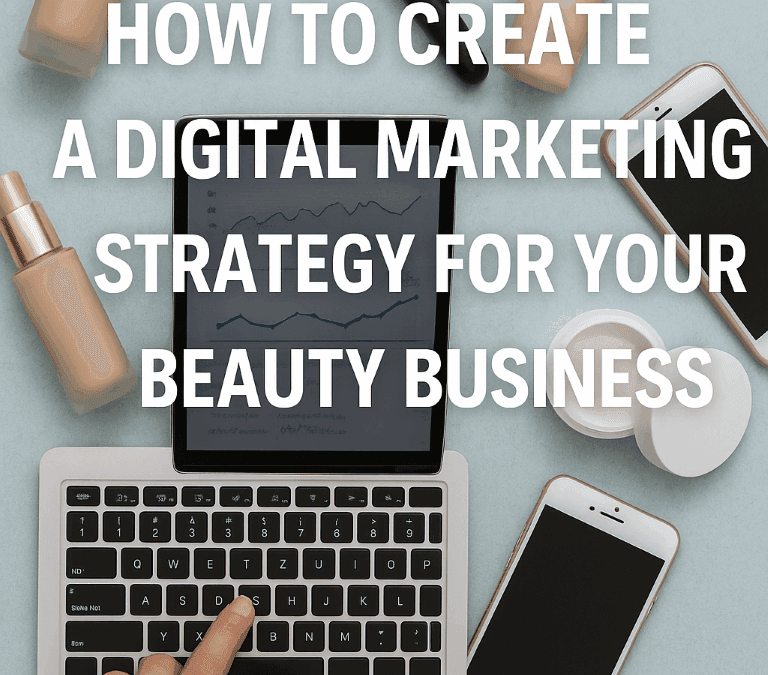Market research is a big and important part of your marketing strategy. As we navigate through the Covid-19 business landscape, it can offer clarity and direction at a time when it’s easy for the current circumstances to overwhelm us and throw us into uncertainty.
Market Research
Yep, it’s that time again. Where you get to be nose-deep in all that industry know-how. So you know what makes your industry, your ideal consumers and your competitors tick when it comes to your novel or USP-laden products or services.
And it’s not only for big businesses but small and medium-sized too. Whether you’re launching a new brand, experiencing growth, developing your business offering — wherever you are with your business — market research provides a clear and big picture of the marketplace you’re in. It helps you generate leads, drive sales and communicate your key messages with your core customers.
You may have already delved into market research ahead of your product or service launch. To figure out whether there was a want, a need, a demand for it. What was missing currently from the marketplace? What were existing players in the industry doing? What gap needed to be filled? And how you could fill that — and make it even better — with your creation?
You’ve already brainstormed ideas for your executive summary (the first part of your marketing strategy, which is written at the very end). Next up, the first meaty part of your marketing strategy that delves into the marketplace itself is market research. It’s here that you form your understanding of the market that you’re going to be marketing to.
As businesses, we need to head to where our customers are. Consumer behaviour statistics show that:
- 80% of Instagram users today follow a business account.
- 87% of mobile consumers go to search engines first to answer their needs and problems.
- Users may delete emails within just three seconds if they do not display correctly on mobile.
What Is Market Research?
Market research is where you gather, collate and interpret information on the market that your product or service/s sit in. It’s vital to help you solve marketing challenges and access marketing opportunities. If you’re launching a new product or service, entering a new market, or even doing both at the same time (known as diversification), then market research will likely form part of your go-to-market plan. We’ll be delving into those!
For now though, in the context of your marketing strategy, market research drives ideas and guidelines that influence your brand’s goals and actions. It enables you to probe the market’s interest in your product or service, gauge market trends, explore how consumer demands are changing and how competitors are evolving to keep up. For a deep dive on target customers, check out Part 3 of Our Ultimate Marketing Strategy Series. And for competitors, head on over to Part 4.
Types of Market Research
When carrying out market research, you’re aiming to gather in-depth insights on the marketplace to provide a roadmap to help form your marketing strategy.
There are two main types of research that you will use to formulate your market research and collect this information:
- Primary Research: Sometimes called field research, involves finding new insights from gathering data, first-hand, that has not been collected previously. This can take the form of qualitative data collection, such as interviewing marketplace insiders and research institutes, accessing focus groups and conducting ethnographic research, which is based on participant observation. Through these, you can gather reliable, expert and up-to-date information on the market place. Quantitative research methods, whereby numerical data analysis or objective measurements are used through surveys, polls and questionnaires, as well as off-page SEO, are all present as part of primary research.
- Secondary Research: Often known as desk research, this type of research often involves collecting and collating data that has already been compiled and organised. These typically include research studies, reports, articles, books and statistical databases.
What are the Benefits of Doing Market Research?
As well as providing a super clear picture of the market you’re marketing to, market research has a whole host of other advantages for your brand:
- It strengthens your branding! By carrying out market research, you’ll naturally have a clearer understanding of the market — and this is then conveyed to your customers. You’ll know whether customers are firstly aware of you, how familiar with you they are, along with what characteristics your customers and competitors perceive you as possessing, and how your brand ranks in comparison to your competitors.
- You can unearth new opportunities. By engaging in a full and focused market research process, you may find that you sniff out new, novel and never-before-thought-of-opportunities for your brand. Evolving, growing and reinventing is key to any successful business. Market research can spearhead this transformation.
- You can improve your product or service. Market research can help hone, tweak, and ultimately, advance what you have to offer. We see it all the time in the industry. Brand Spanking New Product 1.0 comes out, only to be quickly followed by its new 2.0 Bigger and Better Superstar version. The brand realises it needs to listen and modify the product or service based on customer feedback and engagement. Plus, it’s an awesome way to connect with your customers too. They’ll value you and perceive you as a brand that really cares about what they think and need.
- You understand the wants, needs and desires of your customer better. It’s likely that you have an idea of who your current customers are. You may have even got data to support this. And from that have even built shiny personas of your target customers (more on that in Part 3: Target Customers). It’s totally natural for your key customers to change in what they want and need, over time, just as your business evolves too. Knowing this means you can target your customers, making your marketing strategy and activities more targeted and effective.
- Know your competitors too and their market approach. Increasing your share of the marketplace is a must if you’re going to keep hold of your competitive advantage, and equally gain even more market share. Competitors moving up the ranks of favourability with your customers have their research sorted. And know how they fare against you and their other competition. You can increase your popularity by engaging in market research and tailoring your activities and actions to your customers’ needs. Knowledge is power, as they say.
- It ups your marketing ante. Nothing shouts (or roars!) bang-on and ROI-generating marketing more than a detailed, well-thought-out plan of action that takes the “let’s throw something and see if it sticks notion of marketing” out of the equation. Making way for dedicated, effective and measured marketing. Know how your customers respond and react and you’ll be able to improve your reach, engagement and overall campaign achievement.
What to Include in Your Market Research?
The market research part of your marketing strategy will include an analysis of:
- Market trends, including the nature of the market, i.e. is it stable, growing or volatile?, how saturated the market is, as well as typical patterns including seasonality
- Current industry sales and a breakdown of where these come from, and how these sales figures have changed over an established timeframe
- Current standards in the industry and how these are used to ascertain your quality, position and reputation
- Supplier knowledge and expertise used in the industry to provide insights into the vendors that you will need to work with to support the launch or growth of your business
- Processes and systems used in the industry, including the application of technology
- Products and services already out there in the marketplace: What are these? Who is creating them? Who is marketing them? Who is partnering with them? What’s their market share? What are their unique selling points (USPs)?
- Your prospective customer base: their demographics, market segments and buying decision-making factors
Tips for Writing Your Market Research
Before starting your market research, make sure your end goals and objectives are clear. Your business aims, challenges, customers and competitors — and where they fit into the wider marketplace — will guide this and be at the core of your market research.
Once you’ve got these in place, you’re then ready to tackle:
- Identifying market size and your target audience
- Using data and a sample size that represents the marketplace, the segments within it and your target customers. Having a large enough net to cast out to is crucial as it ensures you receive as accurate information as possible from your research sample.
As well as answer:
- What are your business’s major strengths?
- What are your business’s biggest weaknesses?
- What are your business’s greatest opportunities for growth within your marketplace?
- What are the leading challenges that pose a barrier to growth?
- What image does your business portray in the marketplace, considering both your customers and your competitors?
- How would your target customers describe your business in 5 words?
- Which market segment is the most important and therefore crucial to target?
- What are the key messages and USPs of your products or services?
- Which is the most important of these?
- What image do your products/ services convey?
- How would you like your products or services to be distributed and marketed?
- Do your customers perceive you as having the image you believe you have? What is this image?
- How can changes in your business’s marketing approach support growth opportunities?
- What needs to be done to maximise the return on investment (ROI) of this approach?
- How have customer’s needs, attitudes and behaviours changed?
- What are the marketing strategies of the business’s main competitors? How do these differ from yours?
Yep, it’s in-depth. And for good reason. When carried out comprehensively, market research creates a powerful and ROARing positioning, enhancing your brand and its place in the market.
What Not to Do When it Comes to Your Market Research?
So we know the purpose and critical nature of market research, along with what to include to maximise its effectiveness. It’s also important to consider the often-seen market research mistakes to avoid. Typically done in an effort to save time, money and energy resources, the long-term implications of these can be detrimental to the marketing — and ultimate viability and buyability — of your brand.
Here we’ve noted some of the most common market research mistakes to swerve:
- Not doing any market research. Hopefully, reading this blog will encourage you to really go for your market research and will also help you through the process. If we’re honest, without doing our market research, we can often base our knowledge of what the marketplace trends are, who our customers are, what they truly want and the potential for our position in it, on hopes and assumptions. Doing our research means we can avoid this and be effective from the outset.
- Not knowing what your goals and objectives are. It can seem daunting if we’re tasked on Monday with: “Do Market Research”. I’d be out the door too! But if we break it down, often a good place to start is with some industry interviews supported by industry reports.
- Basing decisions today on five-year-old market research. The market will have changed in this time, as will the wants and behaviours of your customers — and your competitors. Old and outdated data will provide information on an old and outdated marketplace. Fresh, current research will present up to date information on the current marketplace.
- Flawed questions. The less clear our aims and objectives are, the clearer this comes across in our questioning. Overcomplicated, confusing or vague questions will skew the feedback you receive, having nightmare results for your marketing strategy. Consider how you word your questions from the very start.
- Limited or unreputable sources. Both are no-nos. Always choose reputable and numerous sources, from recognised and reliable publishers, data providers and research institutes. Otherwise, you risk spending the entire budget on pointless data.
- Small or biased samples. We may be encouraged (naturally) to ask those closest to us, who champion our every move, what they think of our new product or service. Unsurprisingly, they’re likely to say they love it. But are they in your market segment? Are they your target audience? To get the best results, we need to ask your target customers directly, to get their honest feedback. It will save time, money and heartache in the long-run.
Summary
Ultimately then, solid market intelligence helps limit the risks of your marketing decisions. Get to work on your market research and you’ll be better able to identify your market place, improve your knowledge on your customers and competitors, develop and market your products, and grow your business.
Your market research is the backbone of your marketing strategy. In today’s ever-changing, competitive and global marketplace, your marketing strategy must have accurate and complete research at its core, so your business can really reach its fullest potential.
What’s Next?
We’ve brainstormed and now know what to include in our Executive Summary, and we’ve tackled Market Research. Next up, it’s all about delving into your Target Customers. Who are they? What do they want? Why do they want it? Where are they going for it? What solutions solve their problems? How do they access it? When do they make the decision to buy? What factors influence their buying decisions?
Check out the rest of our Ultimate Marketing strategy series for guidance, insights and tips:
- Part 1: Executive Summary
- Part 2: Market Research
- Part 3: Target Market
- Part 4: Competitor Research
- Part 5: Unique Selling Points (USPs)
- Part 6: Positioning and Pricing
- Part 7: Marketing Promotion and Distribution
- Part 8: Budget: Offers and Giveaways
- Part 9: Marketing Goals and Conversions
- Part 10: Marketing Metrics: Measuring, Modifying and Monitoring





0 Comments